The East New York Community Rezoning Plan. Source: NYC Department of City Planning.
In setting out to research New York City Mayor Bill De Blasio’s ambitious plan to rezone various neighborhoods throughout New York City, I decided to spend my initial research in the neighborhood where the plan’s effects will take place first: East New York, Brooklyn.
As a neighborhood, East New York has a complex and often disheartening history. A largely Jewish and Italian neighborhood until the mid-20th century, East New York would “blockbusted” — a nasty process repeated throughout American cities like Detroit all throughout the time, wherein real estate agents would sow fear in the hearts of homeowners, warning them of an impending rise in the area’s black population. Through a combination of outright racism and concerns about plummeting resale values, East New York’s white population left en masse, leaving empty homes which the aforementioned agents would sell to black families for inflated prices. Since this process took hold, East New York has existed as a racialized, segregated, and criminally underinvested community situated in the richest city in the United States.
A typical block of classic NYC rowhouses on Van Siclen Avenue between Atlantic and Liberty Avenues in East New York.
A charming old building featuring an HVAC and Refrigeration Supply store on Atlantic Ave in East New York.
Part of the reason the De Blasio rezonings are so fascinating is that many of them are occurring under the guise of “neighborhood reinvestment.” What I seek to unpack with my research is the degree to which this claim is true, and to which degree the rezonings simply seek to create profitable enterprises for the city in previously derelict communities.
As my several walking tours have shown me, East New York is a relatively quiet residential community, with a large industrial quadrant in the form of the East Brooklyn Industrial Park. The main thoroughfare, and the main target of the rezoning, is the wide Atlantic Avenue which is currently home to a variety of auto body shops, HVAC repair stores, and hardware stores, with the occasional bodega or cake shop.
The rezoning has yet to truly bear fruit in East New York. Yet, I noticed that a large school is being built up near the Broadway Junction transit hub — a development that will surely inspire hope in many of those who are skeptical of the rezoning’s repercussions. In addition, the Empire State Dairy factory (out of use since the mid-20th century), has been given landmark status due to its historic tile artwork showing famers and their cows. One can assume that this landmark designation is a pre-emptive measure, protecting the historic structure from potential demolition once the rezoning permits “higher and better uses” on the Atlantic Avenue lot it occupies.
The two historically significant tile details on the exterior of Atlantic Avenue’s Empire State Dairy building.
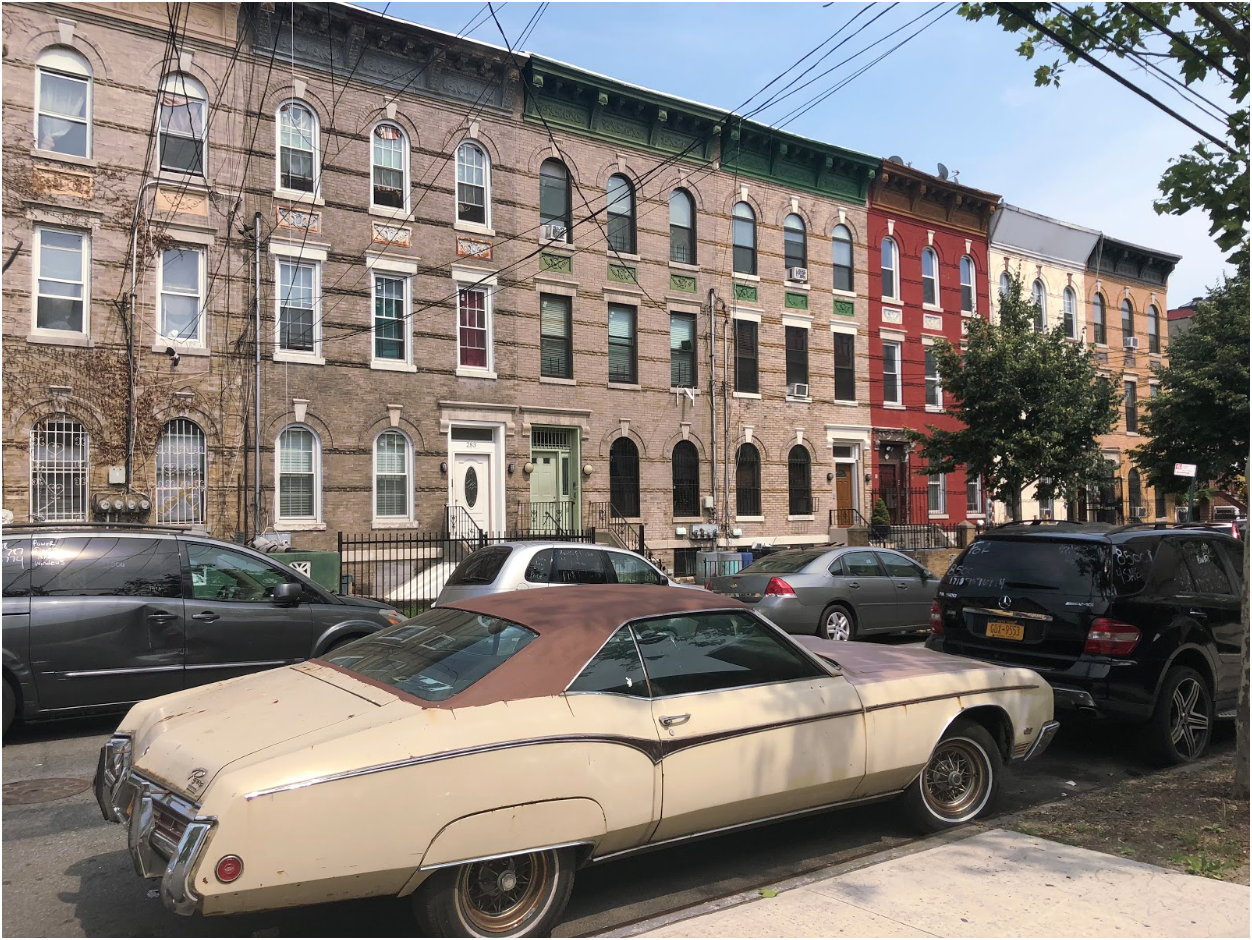
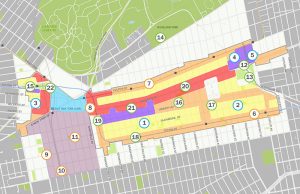
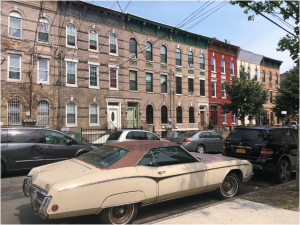
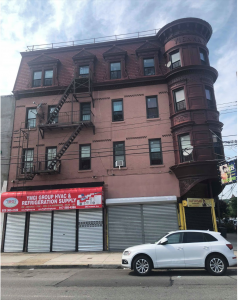
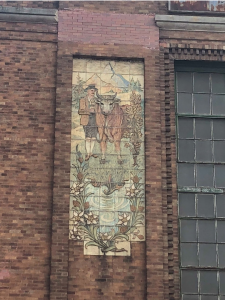
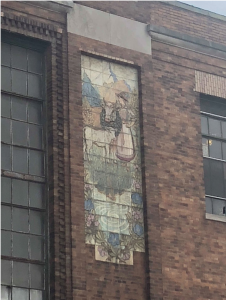
I second Blair’s comments! As someone also pursuing research on a particular geographical site with an eye on history and the implications of present use, I’m wondering how you’ve been attaining your information, and if you chose to avoid or emphasize any particular sources of data.
Is appreciate the stringent research you are doing regarding the rezoning project. I wonder how you are going about this research. Is it archival in nature? Have you been combing newspapers?
I can’t wait to hear more!
-Blair